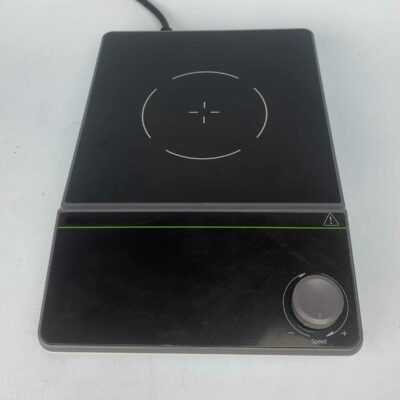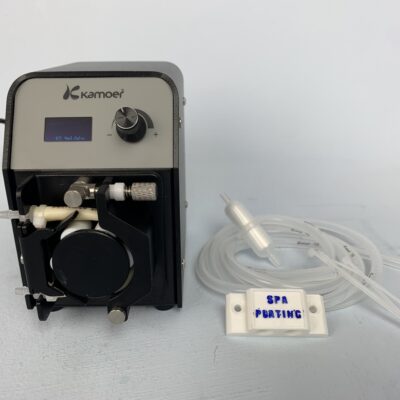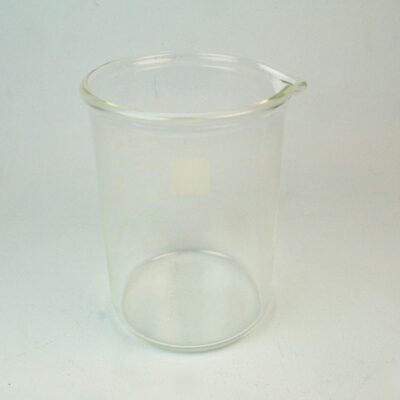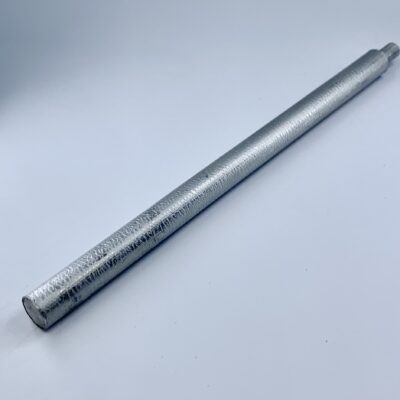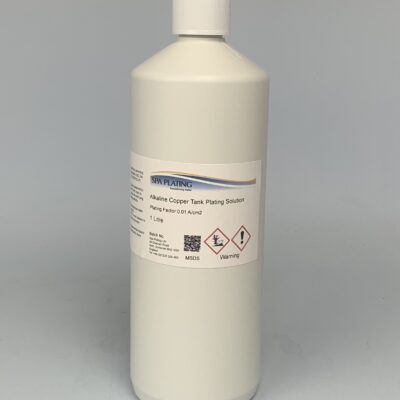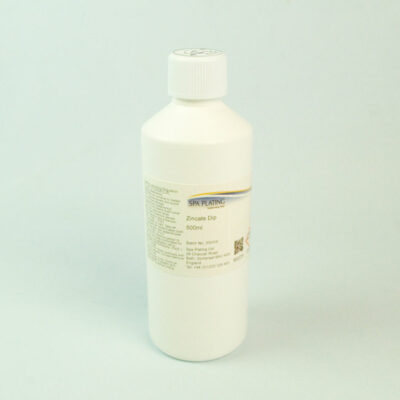Our tin plating solution for beaker and tank plates a matt/satin, very low stress deposit.
- Because it’s low stress, you can easily plate layers in excess of 1000 microns.
- The solution is free of hazardous materials such as mineral acids. This means we can ship it by conventional transport worldwide.
- Our tin plating solution offers the lowest chance of whiskers forming post plating.
We recommend you use continual filtration if you are not using anode bags.
Please note: This is an air-sensitive solution. For storage, keep the lid tightly shut and ensure you have the smallest air space left in the bottle.
When storing it in a plating beaker, cover the beaker with cling film and secure it with a silicone band.
If you don’t take these precautions your tin solution will eventually break down.
Please click on the ‘Examples’ tab for suggestions on how you can reduce air contamination.
HS Code: 3824 99 70
Tin Tank Plating Calculator
How to use this calculator :
1. In the first box, enter the thickness that you want to be plate to in microns (thousandths of a millimetre).
2. In the second box, enter the surface area of the article in square centimetres (cm2).
3. Click the ‘Calculate’ button.
4. Read off the amp setting for your rectifier and the plating time.
5. If using an amp-hour meter or our Coulometer to monitor the process, read of these figures.
6. Finally read off the weight of copper that should be plated.
Operating Conditions and Deposit Data
| Plating Factor |
0.01 A/cm2 (see notes) |
| Plating rate |
~0.5 micron per minute at 0.01A/cm2, 20°C with mild agitation |
| Maximum plating thickness |
In excess of 1000 microns (1mm) |
| Temperature |
18 – 25 |
| pH |
3.6 – 4.0 |
| Tin concentration |
22 grams per litre |
| Filtration |
Continuous through filter pump especiall if anode bags not used. |
| Visual qualities of deposit |
Matt to satin finish turning crystaline at thickensses greater than 20 microns |
| Agitation |
Medium to vigorous |
| Electrode |
Tin |
| Tin content in plate |
99.9% (balance carbon) |
| Cathode efficiency |
100% at Plating Factor = 0.01A/cm2 with mild agitation. |
| Hardness |
1.5 (Mohs Hardness) |
| Density of deposit |
White (β): 7.289 g/cm |
| Stress |
Low – undetectable |
| Special storage requirements |
Store in hermetically sealed container as the tin salt is oxygen sensitive. |
| Shelf life |
1 – 2 years |
| Health and Safety classification |
Irritant |
| Special considerations |
None. |
| Transport (UN number) |
None: Not classified as dangerous for transport |
Notes:
- Higher plating factors can be used and/or anodes used for longer if anode
bags are not used. However continuous filtration wll be necessary.
General guide;
Certain small items, for example Swabs, Nibs and Plating Pens can be sent by normal post within the UK
- The courier option for UK deliveries is FedEx
- Free UK mainland delivery available on orders over £200
- International orders usually 3-5 working days.
For all price quotations for deliveries, please add your items to our shopping cart. You will be able to see the shipping costs by clicking on the ‘Calculate shipping’ button in the cart and before checking out.
Tank Plating on to copper and brass
- Degrease
- Electroclean
- Rinse
- Dip in Activator for up to 1 minute (see note 1 below)
- Rinse
- Plate to using conditions recommended by the Tin Tank Plating Calculator
- Rinse and dry
You can now leave the surface with its matt/satin finish or hand polish using Autosol.
Please note that if the article is intended to be soldered, it’s best to leave the surface as it is, as polishing could hinder the soldering process.
Tank Plating on to zinc and zincated Aluminium
- Degrease
- Electroclean
- Rinse
- Zincate in Zincate Dip for 30 seconds to 2 minutes
- Rinse
- Alkaline copper tank plate for 10 minutes using conditions recommended by the Alkaline Copper Tank Plating Calculator
- Rinse
- Tin tank plate using conditions recommended by the Tin Tank Plating Calculator
Plating on to steel
- Degrease and remove any traces of rust
- Electroclean
- Rinse
- Dip in Activator or ActiClean for 30 seconds – 1 minute
- Rinse
- Alkaline tank copper plate for 1 – 2 minutes.
- Rinse
- Tin tank plate
Notes
1) Please note that the Activator dip should be kept exclusive to a single metal for example, if the Activator has been used for zinc, you shouldn’t use the same solution for steel.
2) Most zinc is cast and contains surface impurities that need to be mechanically removed to achieve good adhesion.
This can be done in a variety of ways including abrading, polishing or tumbling in a barrel with abrasive medium added.
Poorly prepared zinc usually results in deposits which bubble up.





